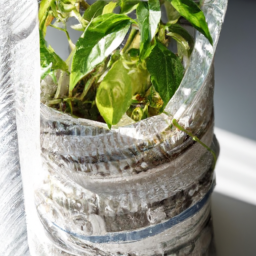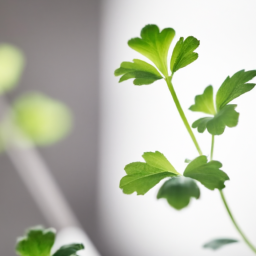
Are you a plant enthusiast looking to create the perfect indoor garden? Well, you’re in luck! In this blog post, we will be discussing the best indoor grow light and the best indoor plant soil to help you achieve optimal plant growth and health. Whether you’re a beginner or an experienced gardener, finding the right grow light and plant soil is essential for providing your indoor plants with the ideal environment to thrive. So, let’s dive in and explore the top options available to make your indoor garden flourish!
Choosing the Best Indoor Grow Light for Your Plants
When it comes to indoor gardening, one of the most crucial factors for the success of your plants is providing them with adequate light. Since natural sunlight may not always be available or sufficient, investing in a high-quality indoor grow light becomes essential. With a wide range of options available in the market, it can be overwhelming to choose the best one for your specific needs. In this guide, we will walk you through the process of selecting the best indoor grow light for your plants.
Understanding the Different Types of Indoor Grow Lights
Before diving into the selection process, it is important to familiarize yourself with the different types of indoor grow lights available. Each type has its own set of advantages and disadvantages, and understanding these differences will help you make an informed decision.
1. Fluorescent Grow Lights
Fluorescent grow lights are popular among indoor gardeners due to their affordability and energy efficiency. They come in two main types: compact fluorescent lights (CFLs) and high-output fluorescent lights (HOFLs). CFLs are suitable for small-scale gardens or seedlings, while HOFLs provide higher light intensity and are ideal for larger plants.
These lights emit a cooler spectrum of light, making them suitable for plants in the vegetative stage. However, they may not provide enough light for flowering or fruiting plants. Additionally, fluorescent lights need to be placed relatively close to the plants to ensure they receive sufficient light.
2. High-Intensity Discharge (HID) Grow Lights
HID grow lights are known for their high light output and are commonly used for larger indoor gardens or commercial operations. There are two main types of HID lights: metal halide (MH) and high-pressure sodium (HPS) lights.
MH lights emit a bluish-white light spectrum, which is ideal for promoting vegetative growth. On the other hand, HPS lights emit a reddish-orange spectrum, which is suitable for flowering and fruiting stages. Many indoor gardeners use a combination of MH and HPS lights throughout the plant’s growth cycle to maximize their growth potential.
HID lights require a ballast to regulate the electrical current and may produce a significant amount of heat. Therefore, proper ventilation and cooling systems are necessary to maintain the optimum temperature in your indoor garden.
3. Light-Emitting Diode (LED) Grow Lights
LED grow lights have gained popularity in recent years due to their energy efficiency, long lifespan, and versatility. Unlike fluorescent or HID lights, LEDs can be customized to emit specific light spectra tailored to different stages of plant growth.
LED lights produce less heat, making them suitable for small spaces or indoor gardens where temperature control is a concern. They also consume less energy compared to other types of grow lights, resulting in lower electricity bills.
While LED grow lights may have a higher upfront cost, their long lifespan and energy efficiency make them a cost-effective choice in the long run.
Factors to Consider When Choosing an Indoor Grow Light
Now that you are familiar with the different types of indoor grow lights, let’s explore the key factors to consider when selecting the best one for your plants:
1. Light Intensity and Coverage
The light intensity and coverage area are crucial factors to ensure your plants receive sufficient light. Different plants have varying light requirements, so it is important to choose a grow light that can provide the appropriate intensity and coverage for your specific plants.
Consider the size of your indoor garden and the height of your plants when determining the light intensity and coverage area needed. Some grow lights come with adjustable settings, allowing you to customize the light intensity based on your plants’ growth stage.
2. Energy Efficiency
Energy efficiency is an important consideration, especially if you plan to run your grow lights for extended periods. Look for lights that have a high photosynthetic photon flux density (PPFD) per watt ratio, as this indicates their energy efficiency.
LED grow lights are known for their energy efficiency, consuming significantly less electricity compared to fluorescent or HID lights. Although they may have a higher initial cost, the energy savings over time make them a worthwhile investment.
3. Heat Output
Some types of grow lights, such as HID lights, can produce a substantial amount of heat. Excessive heat can damage your plants or lead to temperature control issues in your indoor garden. Therefore, it is essential to consider the heat output of the grow light and ensure proper ventilation and cooling systems are in place.
LED grow lights produce much less heat compared to other types, making them a suitable choice for small spaces or environments where temperature control is a concern.
Conclusion
Choosing the best indoor grow light for your plants is a crucial step towards ensuring their health and vitality. By understanding the different types of grow lights available and considering factors such as light intensity, energy efficiency, and heat output, you can make an informed decision that suits your specific needs.
Remember to assess your plants’ light requirements and the size of your indoor garden before making a purchase. Investing in a high-quality grow light will provide your plants with the optimal light they need to thrive indoors.
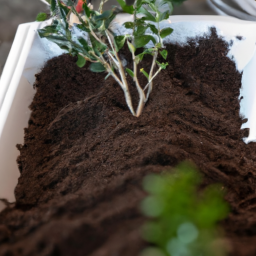
Comparing Different Types of Indoor Grow Lights
Introduction
Indoor gardening has become increasingly popular among plant enthusiasts, and one of the key elements for successful indoor gardening is providing the right amount and quality of light. With the advancement in technology, there are now various types of indoor grow lights available in the market. In this article, we will compare and analyze some of the best indoor grow lights to help you make an informed decision for your indoor garden.
1. Fluorescent Grow Lights
Fluorescent grow lights have been a popular choice among indoor gardeners for many years. They are affordable, energy-efficient, and provide a wide spectrum of light that is suitable for most plants. There are two main types of fluorescent grow lights: T5 and T8. T5 lights are more efficient and produce a higher intensity of light, making them ideal for seedlings and young plants. T8 lights, on the other hand, are slightly less intense but still provide sufficient light for most plants.
Fluorescent grow lights are easy to install and can be used in a variety of setups, including hanging fixtures and grow light panels. They also produce less heat compared to other types of grow lights, reducing the risk of burning your plants. However, fluorescent lights have a limited lifespan and may need to be replaced every 6-12 months for optimal performance.
2. LED Grow Lights
LED grow lights have gained popularity in recent years due to their energy efficiency and versatility. LEDs (Light Emitting Diodes) are highly efficient at converting electricity into light, making them an eco-friendly option for indoor gardening. LED grow lights come in a wide range of colors and spectrums, allowing you to customize the light output according to the specific needs of your plants.
LED grow lights have a longer lifespan compared to fluorescent lights, often lasting for several years without the need for replacement. They also produce less heat, reducing the risk of heat damage to your plants. Additionally, LED lights can be dimmed or adjusted to mimic natural sunlight, promoting healthy growth and development in your plants. However, LED grow lights can be more expensive upfront compared to fluorescent lights.
3. High-Intensity Discharge (HID) Grow Lights
HID grow lights are known for their high output and intensity, making them suitable for large indoor gardens or commercial setups. There are two main types of HID grow lights: Metal Halide (MH) and High-Pressure Sodium (HPS). Metal Halide lights emit a bluish-white light spectrum, which is ideal for vegetative growth. High-Pressure Sodium lights, on the other hand, produce a reddish-orange spectrum that is perfect for flowering and fruiting stages.
HID grow lights are powerful and can cover a large area, making them a popular choice for professional growers. However, they generate a significant amount of heat and require proper ventilation and cooling systems to prevent damage to your plants. HID lights also consume more energy compared to fluorescent or LED lights, resulting in higher electricity bills.
Conclusion
Choosing the right indoor grow light for your plants is crucial for their overall health and growth. Each type of grow light has its own advantages and disadvantages, so it’s important to consider factors such as your budget, the size of your indoor garden, and the specific needs of your plants. Fluorescent lights are a cost-effective option for beginners or small setups, while LED lights offer energy efficiency and customization options. HID lights are best suited for large-scale or commercial indoor gardens. Evaluate your requirements and make an informed decision to create the perfect environment for your indoor plants to thrive.

Factors to Consider When Selecting the Best Indoor Plant Soil
Introduction
When it comes to indoor gardening, selecting the right soil for your plants is crucial for their overall health and growth. The quality of the soil directly affects the availability of nutrients and water to the plants’ roots. With a wide range of options available in the market, it can be overwhelming to choose the best indoor plant soil. In this guide, we will discuss the factors you should consider to make an informed decision and provide recommendations for the best indoor plant soil options.
1. Nutrient Content
One of the most important factors to consider when selecting indoor plant soil is its nutrient content. Different plants have varying nutrient requirements, so it is essential to choose a soil that meets those needs. Look for a soil mix that contains a balanced combination of macronutrients like nitrogen, phosphorus, and potassium, as well as micronutrients like iron, manganese, and zinc. These nutrients are essential for healthy plant growth and development.
Additionally, consider the pH level of the soil. Some plants prefer acidic soil, while others thrive in alkaline conditions. It is crucial to match the pH requirements of your plants with the soil you choose. You can easily test the pH of the soil using a pH testing kit available at most gardening stores.
2. Water Retention and Drainage
The ability of the soil to retain water and provide proper drainage is another crucial factor to consider. Overwatering or waterlogged soil can lead to root rot and other plant diseases, while underwatering can cause dehydration and stunted growth. Therefore, it is important to strike a balance.
Look for a soil mix that has good water retention capabilities, allowing the roots to access water when needed. At the same time, it should also provide adequate drainage to prevent water from pooling at the bottom of the pot. Well-draining soil allows excess water to flow out, preventing the roots from sitting in stagnant water.
3. Soil Texture and Structure
The texture and structure of the soil play a significant role in the overall health of your indoor plants. Soil with good structure allows for proper root development and aeration. It should be loose enough to allow roots to penetrate easily but also provide enough support for the plants.
Sandy soils are lightweight and drain quickly, but they may not retain enough moisture or nutrients. On the other hand, clay soils retain water well but can become compacted, leading to poor drainage. The ideal soil texture for most indoor plants is a loamy mix, which combines the benefits of both sandy and clay soils.
Conclusion
Selecting the best indoor plant soil is essential for the success of your indoor garden. Consider the nutrient content, water retention and drainage capabilities, and soil texture and structure when making your decision. Remember to match the soil’s pH level with the requirements of your plants. By carefully considering these factors, you can provide your indoor plants with the optimal growing environment, leading to healthy and thriving plants in your home.
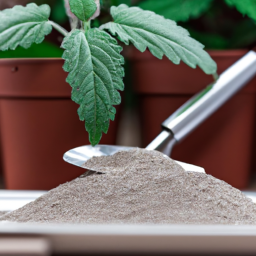
4 Tips for Maximizing Plant Growth with Indoor Grow Lights
Indoor gardening has become increasingly popular, allowing plant enthusiasts to enjoy the beauty and benefits of plants all year round. To ensure optimal growth and health, it is essential to provide plants with the right amount and quality of light. This is where indoor grow lights come into play. In this article, we will discuss four tips for maximizing plant growth with indoor grow lights.
1. Choose the Right Type of Grow Light
When it comes to indoor grow lights, there are several options available in the market. The two most popular types are fluorescent and LED lights. Fluorescent lights are affordable and provide a wide spectrum of light, making them suitable for all stages of plant growth. On the other hand, LED lights are energy-efficient and emit specific wavelengths of light that cater to the different needs of plants during various growth stages.
When selecting a grow light, consider the specific requirements of your plants. Some plants thrive under blue light, while others require red light. Additionally, ensure that the light fixture you choose covers the entire area where your plants are located to ensure uniform light distribution.
It’s important to note that different plants have different light requirements. Conduct thorough research on the light needs of your specific plants to make an informed decision when choosing the right type of grow light.
2. Determine the Right Light Intensity and Duration
Light intensity and duration play a crucial role in plant growth. Too much or too little light can have adverse effects on your plants. To determine the right light intensity, you can use a light meter to measure the amount of light reaching your plants. Most plants require around 2000 to 5000 lumens per square foot for optimal growth.
As for the duration, most plants need around 12 to 16 hours of light per day. However, some plants, like succulents, may require fewer hours of light. It’s important to understand the specific needs of your plants and adjust the light intensity and duration accordingly.
Keep in mind that plants also need a period of darkness to rest and rejuvenate. Avoid leaving the grow lights on 24/7 as it can disrupt their natural growth cycle.
3. Position the Grow Lights Properly
The placement of your grow lights is crucial for ensuring even growth and preventing leggy or lopsided plants. As a general rule, position the lights approximately 6 to 12 inches above the plants. However, this distance may vary depending on the type of grow light and the specific requirements of your plants.
Consider using reflective surfaces, such as aluminum foil or reflective grow tent walls, to maximize light distribution. This will help prevent light from being absorbed by surrounding objects and ensure that more light reaches the plants.
Regularly monitor the distance between the grow lights and your plants. If you notice signs of light burn, such as yellowing or wilting leaves, raise the lights slightly to reduce the intensity.
4. Provide Adequate Ventilation and Air Circulation
Proper ventilation and air circulation are essential for the overall health of your plants. When using indoor grow lights, the heat generated can sometimes lead to increased humidity and stagnant air, which can create a breeding ground for pests and diseases.
Ensure that your grow space has adequate ventilation to prevent the buildup of excess humidity. Use fans or open windows to promote air circulation, which will help strengthen the stems of your plants and prevent the growth of mold or mildew.
Furthermore, be mindful of the temperature in your grow space. High temperatures can stress plants and inhibit their growth. Invest in a thermometer to monitor the temperature and adjust it accordingly by providing additional cooling or heating if necessary.
By following these tips, you can maximize the growth and health of your indoor plants using grow lights. Remember to choose the right type of grow light, determine the appropriate light intensity and duration, position the lights properly, and provide adequate ventilation and air circulation. Happy gardening!
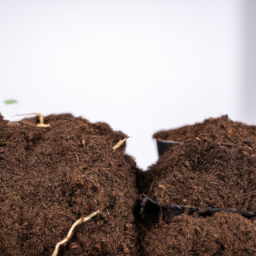
The Importance of Quality Soil for Indoor Plant Health
Introduction
Indoor plants bring life and beauty to our homes, but their health and vitality depend greatly on the quality of soil they are planted in. Just like humans need a balanced diet to thrive, plants require nutrient-rich soil to grow and flourish. In this article, we will delve into the importance of quality soil for indoor plants and provide you with a step-by-step guide on choosing the best indoor plant soil for your green companions.
The Role of Soil in Indoor Plant Health
Soil serves as the foundation for any plant’s growth and development. It acts as a reservoir for essential nutrients, water, and air, providing the necessary elements for plants to thrive. Quality soil not only supports root growth but also aids in the absorption of nutrients, promotes microbial activity, and ensures proper drainage. By understanding the significance of soil, you can create an optimal environment for your indoor plants to flourish.
Step 1: Understanding Soil Composition
To choose the best indoor plant soil, it is crucial to understand its composition. Quality soil consists of a balanced mixture of organic matter, minerals, water, and air. Organic matter, such as compost or peat moss, improves soil structure and fertility. Minerals, like sand, silt, and clay, provide essential nutrients and affect drainage. Water and air are necessary for root respiration and nutrient absorption. A healthy soil composition ensures a well-rounded environment for your plants.
Step 2: Assessing Drainage and Moisture Retention
Proper drainage and moisture retention are vital aspects of quality indoor plant soil. Excessive waterlogging can lead to root rot and other diseases, while insufficient moisture can cause dehydration and stunted growth. To assess drainage, squeeze a handful of soil tightly and then release. If the soil crumbles easily, it indicates good drainage. If it retains its shape and feels wet, it may have poor drainage. Moisture retention can be tested by pressing a finger into the soil. If it feels moist but not soggy, it is likely to retain water effectively.
Step 3: Choosing the Right Soil Mix
When selecting indoor plant soil, it is essential to choose a mix suitable for your specific plant’s needs. Different plants have varying preferences for soil composition and pH levels. For example, succulents thrive in well-draining soil with a higher sand content, while tropical plants prefer soil with higher organic matter. Research the specific requirements of your plants and select a soil mix accordingly. Alternatively, you can create your own soil mix by combining components like potting soil, perlite, and vermiculite in appropriate proportions.
Step 4: Adding Nutrients to the Soil
While quality soil provides a good foundation, indoor plants often require additional nutrients to thrive. Fertilizers can be added to the soil to supplement the plant’s nutrient requirements. Organic fertilizers, such as compost or worm castings, are excellent choices as they release nutrients slowly and improve soil structure. Synthetic fertilizers can also be used, but they should be applied cautiously to avoid overfeeding and potential damage to the plants. Remember to follow the recommended dosage provided by the manufacturer.
Step 5: Maintaining Soil Health
Once you have chosen the best indoor plant soil and planted your green companions, it is crucial to maintain soil health to ensure long-term plant vitality. Regularly monitor moisture levels and water your plants accordingly. Overwatering can lead to root rot, while underwatering can cause wilting and nutrient deficiencies. Additionally, periodically check the soil pH and adjust if necessary to meet the specific needs of your plants. Regularly inspect the soil for signs of pests or diseases and take appropriate measures to prevent or treat any issues that arise.
Conclusion
Quality soil plays a vital role in the health and well-being of indoor plants. By understanding soil composition, assessing drainage and moisture retention, choosing the right soil mix, adding necessary nutrients, and maintaining soil health, you can create an optimal environment for your plants to thrive. Remember, each plant has unique requirements, so it is essential to research and cater to their specific needs. With the right soil, your indoor plants will flourish, bringing beauty and joy to your home.
Here are the Essential Points
Are you a plant enthusiast looking to create the perfect indoor garden? Look no further! In this blog post, we will explore the best indoor grow light and the best indoor plant soil to help you achieve optimal plant growth and health.
When it comes to indoor gardening, a high-quality grow light is essential. The best indoor grow light is one that mimics natural sunlight, providing your plants with the right amount and spectrum of light they need to thrive. LED grow lights are a popular choice due to their energy efficiency and ability to emit the full spectrum of light. They are also long-lasting and produce less heat, preventing any damage to your plants. If you’re on a budget, fluorescent grow lights are a great alternative, although they may not be as efficient as LEDs.
Now that you have the perfect light source, let’s talk about the best indoor plant soil. The key to healthy plants is a well-draining soil that retains moisture while allowing excess water to escape. A mix of potting soil, perlite, and vermiculite is a great option as it provides good aeration and drainage. Additionally, adding organic matter like compost or peat moss can enrich the soil with nutrients, promoting healthy root development. Remember to choose a soil mix that is specific to the type of plants you are growing, as different plants have different soil requirements.
By investing in the best indoor grow light and using high-quality indoor plant soil, you can create an ideal environment for your indoor garden. With the right tools, your plants will flourish, bringing beauty and greenery into your home. Happy gardening!
Frequently Asked Questions (FAQ):
Q1: What is the best indoor grow light for my plants?
A1: Choosing the best indoor grow light depends on various factors such as the type of plants you have, their growth stage, and the area you need to cover. LED grow lights are popular for their energy efficiency and ability to provide a full spectrum of light. However, fluorescent and HID lights are also effective options. Consider the specific needs of your plants and consult with experts or online resources for recommendations.
Q2: How do I determine the appropriate wattage for an indoor grow light?
A2: The wattage of an indoor grow light should be determined based on the size of your growing area and the light requirements of your plants. As a general guideline, you’ll need about 20-40 watts per square foot of growing space for low-light plants, while high-light plants may require 40-60 watts per square foot. It’s always a good idea to check the manufacturer’s recommendations or seek advice from experienced gardeners to ensure you choose the right wattage.
Q3: What are the advantages of using LED grow lights?
A3: LED grow lights offer several advantages for indoor gardening. They are energy-efficient, consuming less electricity compared to other types of lights. LED lights also produce less heat, reducing the risk of plant damage. Additionally, LED grow lights can be customized to emit specific wavelengths of light, promoting optimal plant growth and flowering. Their long lifespan and versatility make them a popular choice among indoor gardeners.
Q4: Can I use regular soil for indoor plants?
A4: While regular soil can be used for some indoor plants, it may not provide the ideal conditions for all types of plants. Regular soil may lack the necessary nutrients and drainage properties required for healthy indoor plant growth. It’s recommended to use a high-quality indoor plant soil mix, specifically formulated to provide the right balance of nutrients, moisture retention, and aeration. This ensures optimal growth and prevents issues like root rot or nutrient deficiencies.
Q5: What should I look for in a good indoor plant soil?
A5: When choosing indoor plant soil, look for a mix that has good drainage and aeration properties to prevent waterlogging and promote root health. It should also contain a balanced blend of organic matter, such as compost or peat moss, to provide essential nutrients. pH neutrality is important too, as it allows plants to absorb nutrients effectively. Lastly, consider the specific needs of your plants, such as moisture retention or specific soil additives, and choose a soil mix accordingly.
Q6: Can I reuse indoor plant soil?
A6: Yes, indoor plant soil can be reused with proper care and maintenance. Before reusing, make sure to remove any plant debris or roots from the soil. You can also mix in some fresh compost or organic matter to replenish nutrients. However, keep in mind that reusing soil increases the risk of pests, diseases, and nutrient depletion. It’s recommended to sterilize the soil by baking it in the oven or using solarization methods to kill any potential pathogens before reusing.
Q7: How often should I water my indoor plants?
A7: The frequency of watering indoor plants varies depending on factors such as plant type, pot size, humidity levels, and environmental conditions. As a general rule, it’s better to underwater than overwater indoor plants, as excessive moisture can lead to root rot. Check the moisture level of the soil by inserting your finger about an inch deep. If it feels dry, it’s time to water. However, it’s always best to research the specific watering needs of your plants, as some may require more frequent watering than others.
Q8: Can I use tap water to water my indoor plants?
A8: Tap water can be used to water indoor plants in most cases. However, it’s important to consider the quality of your tap water. Some tap water contains high levels of chlorine, fluoride, or other chemicals that can be harmful to plants. If you’re concerned about the water quality, you can let tap water sit for 24 hours to allow chlorine to evaporate, or use filtered or distilled water instead. Certain plants, like orchids or carnivorous plants, may have specific water requirements, so it’s always best to research their needs.
Q9: How can I prevent pests from infesting my indoor plants?
A9: Preventing pests in indoor plants starts with maintaining a clean and healthy environment. Regularly inspect your plants for any signs of pests or diseases, and promptly remove any affected leaves or plants. Avoid
Dr. Olivia Green is a botanist with over two decades of experience in indoor plant cultivation. She holds a Ph.D. in Plant Biology and has dedicated her career to researching plant behavior in controlled environments. Dr. Green is passionate about helping plant enthusiasts master the art of indoor gardening through her extensive knowledge and practical insights.

